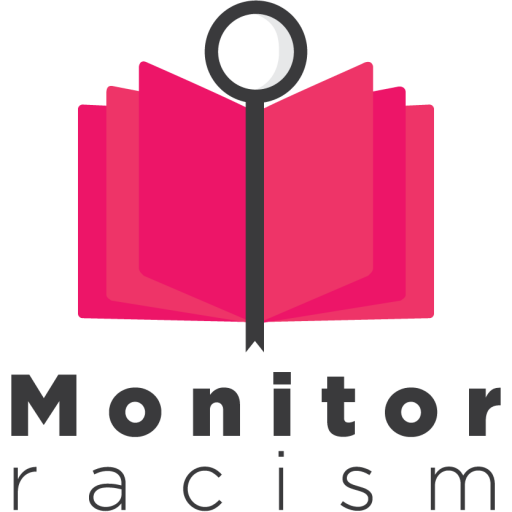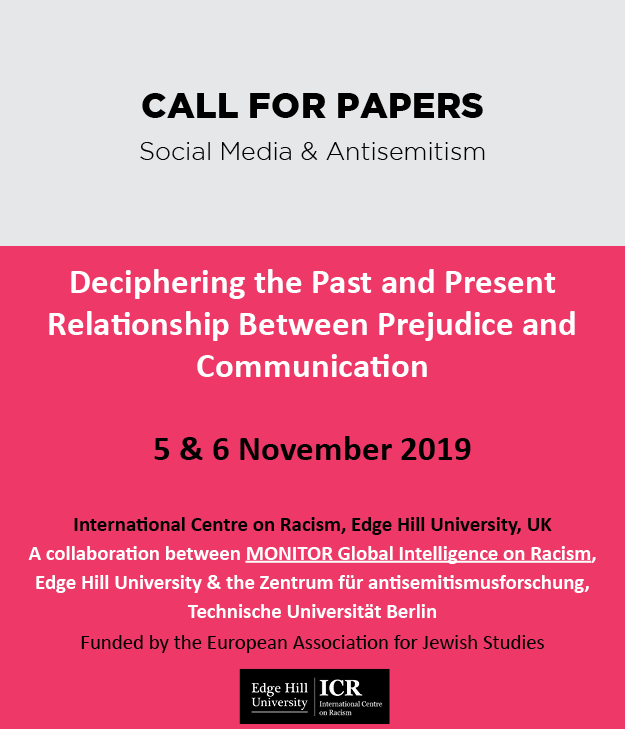Bradley W. Hart
May 2019
For more than a decade, pundits across the American political spectrum have been vocally commenting on the alleged rise of fascism in the United States.
Naturally, those being tarred with the fascist label have differed dramatically between commentators. In 2007, for instance, former correspondent for The New York Times, Chris Hedges, condemned the rise of “Christian fascism” in the United States and claimed that fundamentalists were planning the destruction of liberal democracy in favour of authoritarian, theocratic government.[1]
Pundits on the right loudly returned the insult. Jonah Goldberg’s 2009 book Liberal Fascism riposted that progressives from Woodrow Wilson to Hillary Clinton were the true intellectual heirs of Benito Mussolini.[2] By the early Obama years, one-time Fox News commentator and talk show host Glenn Beck had made a national reputation for himself by claiming that a wide range of Democratic politicians were crypto-fascists and illustrating the point with chalkboard diagrams. (Beck’s insistence that some form of left-wing fascism is barely being kept at bay has continued into the Trump era and often relies on the claim that National Socialism is ideologically identical to socialism and communism.[3])
Yet, despite this history of name-calling and crying wolf to sell books and drive up ratings, the past several years have demonstrated that there is legitimate reason to be worried. One hallmark of historical forms of fascism, virulent anti-minority sentiment, is demonstrably rising across the United States. Reported hate crimes have been consistently increasing in recent years, and dramatic events like the Pittsburgh synagogue shooting in the United States, and most recently the New Zealand mosque shooting, have led to increasing public awareness of extreme views and conspiracy theories that were previously relegated to dark corners of the Internet.[4] That attention, in turn, provides such views with increased publicity and sparks the curiosity of those who might be inclined to share them. Less lethal forms of bigotry appear to be on the rise as well. The Anti-Defamation League reported nearly 1,900 anti-Semitic incidents in 2018, nearly double the number recorded in 2015, and the third highest year ever recorded by the organization.[5] All this, of course, comes on the heels of arguably the most important historical moment for the post-1945 far right: the 2017 Charlottesville, Virginia rally attended by a range of white supremacist and other groups that ended in open violence and the death of a counter-protestor.[6]
Does all this mean fascism is really on the rise? Despite the disturbing rise in hate crimes and violence, from a structural standpoint there are contradictory signals. After Charlottesville, for instance, the National Socialist Movement (N.S.M.), one of the country’s most notorious Nazi-emulating groups, found itself under significant legal pressure and several lawsuits. Remarkably, amidst that turmoil the organization’s president was convinced to turn over his role to an African-American activist who has vowed to dismantle the group and use its assets to educate the public about the Holocaust.[7] Similarly, the Southern Poverty Law Center has traced a steady decline in the number of Ku Klux Klan chapters nationwide.[8] The news is not all good, however; the SPLC also reported that the overall number of hate groups has increased nationally over the past several years, the rise of which has corresponded precisely with the increase in hate crimes.[9]
What may well be taking place is a rise in overall prejudice and racism, coupled with a realignment of the organizational landscape that represents and furthers those views. Younger people who have been drawn into prejudice by Internet memes and social media subcultures may see little need to join groups like the KKK; they can organize semi-anonymously online, join smaller organizations that share idiosyncratic sets of bigoted views, or even take real-world action with limited reliance on others, as the New Zealand mosque gunman and Pittsburgh synagogue shooter appear to have done.
There is some historical precedent for realignments of this kind. During the mid-1930s, for instance, the most prominent pro-Nazi group in the United States was the German-American Bund. Based in New York City, the Bund attracted a nationwide membership that probably numbered above 20,000 at its peak. Its wider following was probably much larger, as evidenced by large attendance figures at its regular meetings and rallies across the country, many of which openly praised Hitler and the Third Reich. In February 1939, the Bund’s leader, Fritz Kuhn, held a mass rally at Madison Square Garden that was steeped in anti-Semitic themes and attracted 20,000 spectators. Violence between Bund members and protestors raged outside the arena, and during Kuhn’s speech a Jewish-American hotel worker rushed the stage and was beaten by his guards. While the rally got Kuhn the press publicity it was designed to generate, it also became his downfall. Investigators subsequently investigated the Bund’s finances, found that Kuhn had been skimming funds, and convicted him of embezzlement. Despite Kuhn’s ambitions to become a future American Führer, he would end up sitting out World War II in prison.
Yet his movement did not disappear overnight. Members began abandoning the Bund en masse after Kuhn’s conviction, but they did not immediately abandon their views. Some seem to have fallen into alliances with the Silver Legion, an openly violent, Nazi-emulating group led by the mystic William Dudley Pelley, who developed an arcane ideology for his followers that only the most dedicated acolyte could fully understand.
After the 1940 election, there is evidence that Bund members flocked into the non-interventionist America First Committee, which was most popularly represented by the aviator Charles Lindbergh. “Lucky Lindy” himself was no stranger to anti-Semitic views and, on September 11, 1941, gave an openly anti-Semitic speech in Des Moines, Iowa, that exposed the depths of his prejudice by blaming the Jews for the European war. The America First Committee disbanded after Pearl Harbor, but its legacy would remain a source of political contention for decades. The important point is that while the Bund itself disappeared, its adherents did not. Instead, they flocked into smaller organizations like the Silver Legion, or joined much bigger ones like America First and began to draw other, less extreme members in their ideological direction. Following Des Moines, Lindbergh and America First received an outpouring of mail, much of which was supportive of his sentiments.
We do not know what became of former Bund and Silver Legion supporters after the war, but by 1959 the American Nazi Party under George Lincoln Rockwell had attracted a new generation of extremists into its ranks by focusing on hot-button issues like the spread of Communism in Asia. Similarly, modern-day far-right groups have updated their vitriolic rhetoric to focus on undocumented immigrants, Islamic extremism and other hot-button issues of the early 21st century that are also the focus of mainstream political discourse.[10] In reality, such groups use these issues as window-dressing for the traditionally fascist beliefs they espouse, but they are a useful way to make fascism seem appealing and less threatening to new generations of potential recruits. This constantly-shifting set of ideological priorities makes American fascism particularly insidious and, in some ways, difficult to combat.
If the extremist
landscape is indeed undergoing a realignment, stark challenges lie ahead for
anti-racism campaigners and law enforcement officials. Small, decentralized
groups are by nature harder to track and infiltrate than large and well-known
groups. Internet culture has spawned thousands of obscure theories, memes and
even terminological constructs that are difficult for non-members to unravel. These
are not unlike the arcane theories of figures in the late nineteenth and early
twentieth centuries like Houston Stewart Chamberlain or Oswald Spenger, both of
whom composed vast and complicated works that were almost undecipherable to all
but the most immersed readers.[11] Yet, this lack of
accessibility did not prevent their work from influencing generations of
bigots, including Adolf Hitler himself. Scholars must not discount the
seemingly-obscure sources, theories and propaganda materials upon which
present-day groups base their ideologies and appeal to potential recruits, even
if they do originate on obscure Internet message boards and social media.
Understanding the current trajectory and likely future of the American
fascist movement will require scholars and pundits to move beyond the
simplistic and unhelpful arguments of the last decade. We must refocus on how emerging
fascist groups recruit their members, hone their messages, and convince one
another to engage in real-life action. History suggests that the next few years
will see an increase in membership of these new groups, which will gradually
supersede their predecessors. As with the former members of the Bund and
America First, members of these new organizations will
likely join larger political groups and begin pushing those groups’ ideologies
toward the political margins. Now more than perhaps ever before, preventing the
further spread of fascist ideology in the United States will require vigilance,
public education, and constant critical engagement with the misguided arguments
presented by the purveyors of hate.
Dr. Bradley W. Hart is Assistant Professor at California State University, Fresno, U.S. He is the author of Hitler’s American Friends: The Third Reich’s Supporters in The United States (Thomas Dunne Books, New York, 2018).
[1] Chris Hedges, American Fascists: The Christian Right and the War On America.
[2] Jonah Goldberg, Liberal Fascism: The Secret History of the American Left, From Mussolini to the Politics of Change.
[3] https://www.theblaze.com/video/watch-fascism-communism-its-the-same-thing-glenn-breaks-out-the-chalkboard-to-explain
[4] https://www.npr.org/2019/03/15/703904631/after-new-zealand-attacks-muslim-americans-call-for-action-against-rising-bigotr
[5] https://www.adl.org/news/press-releases/anti-semitic-incidents-remained-at-near-historic-levels-in-2018-assaults
[6] https://www.nytimes.com/2017/08/13/us/charlottesville-virginia-overview.html
[7] https://www.washingtonpost.com/dc-md-va/2019/03/01/how-black-man-outsmarted-neo-nazi-group-became-their-new-leader/
[8] https://nypost.com/2018/02/21/kkk-chapters-are-dwindling-but-other-hate-groups-are-on-the-rise/
[9] https://www.splcenter.org/hate-map
[10] https://www.youtube.com/watch?v=IT_bNKBcalI
[11] https://www.britannica.com/biography/Houston-Stewart-Chamberlain; https://www.nybooks.com/articles/1981/09/24/ravings-of-a-renegade/


